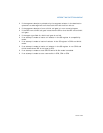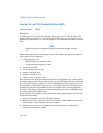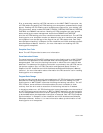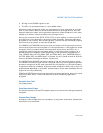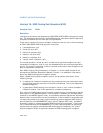
6-58 Vol. 3
INTERRUPT AND EXCEPTION HANDLING
Interrupt 16—x87 FPU Floating-Point Error (#MF)
Exception Class Fault.
Description
Indicates that the x87 FPU has detected a floating-point error. The NE flag in the
register CR0 must be set for an interrupt 16 (floating-point error exception) to be
generated. (See
Section 2.5, “Control Registers,” for a detailed description of the NE
flag.)
NOTE
SIMD floating-point exceptions (#XM) are signaled through interrupt
19.
While executing x87 FPU instructions, the x87 FPU detects and reports six types of
floating-point error conditions:
• Invalid operation (#I)
— Stack overflow or underflow (#IS)
— Invalid arithmetic operation (#IA)
• Divide-by-zero (#Z)
• Denormalized operand (#D)
• Numeric overflow (#O)
• Numeric underflow (#U)
• Inexact result (precision) (#P)
Each of these error conditions represents an x87 FPU exception type, and for each of
exception type, the x87 FPU provides a flag in the x87 FPU status register and a mask
bit in the x87 FPU control register. If the x87 FPU detects a floating-point error and
the mask bit for the exception type is set, the x87 FPU handles the exception auto
-
matically by generating a predefined (default) response and continuing program
execution. The default responses have been designed to provide a reasonable result
for most floating-point applications.
If the mask for the exception is clear and the NE flag in register CR0 is set, the x87
FPU does the following:
1. Sets the necessary flag in the FPU status register.
2. Waits until the next “waiting” x87 FPU instruction or WAIT/FWAIT instruction is
encountered in the program’s instruction stream.
3. Generates an internal error signal that cause the processor to generate a
floating-point exception (#MF).






